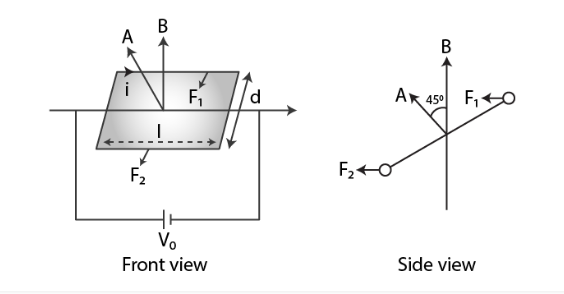Question:
A rectangular conducting loop consists of two wires on two opposite sides of length l joined together by rods of length d. The wires are each of the same
material but with cross-sections differing by a factor of 2. The thicker wire has a resistance R and the rods are of low resistance, which in turn are connected
to a constant voltage source Vo. The loop is placed in uniform a magnetic field B at 45oto its plane. Find τ, the torque exerted by the magnetic field on the loop
about an axis through the centres of rods.
Solution:

Force and torque on the first wire is given as
F1 = i1l B sin 90o = V0/2R lB
τ1= d/2√2
F1 = V0ldB/2√2 R
τ = 1/4√2 V0AB/R
